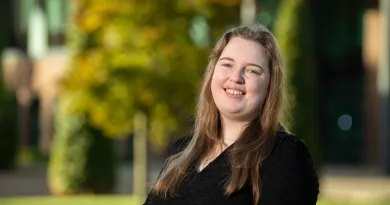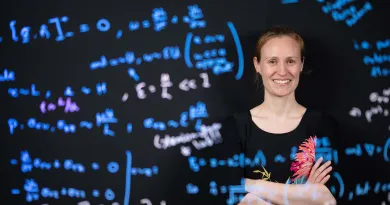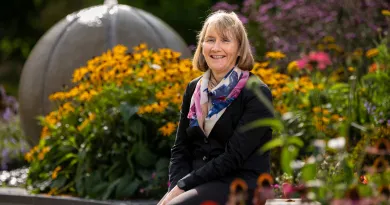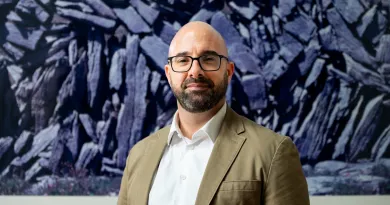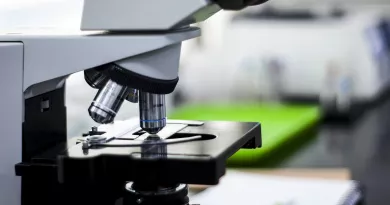Professor Michael Zaworotko is Bernal Chair of Crystal Engineering in the Department of Chemical Sciences and Bernal Institute. He is a Research Ireland Research Professor and member of SSPC Research Ireland Centre for Pharmaceuticals hosted by UL.
His research activities have focused upon fundamental and applied aspects of crystal engineering. Currently, metal-organic materials (MOMs), especially microporous and ultramicroporous sorbents, and multi-component pharmaceutical materials (MPMs) such as cocrystals, hydrates and ionic cocrystals are of particular interest.
These new materials are aimed at addressing global challenges such as carbon capture, water purification and better medicines.

People in science are driven by a dream. The dream is, in almost all cases, to have a positive impact on society.
Michael Zaworotko (or Mike Z as he is known) is a world leading authority on crystal engineering. His eureka moments have shaped his research, something which is more a calling rather than a career
I work in the field called crystal engineering. Crystal Engineering is a field of chemistry that focuses upon crystals, in particular how to design crystals, how to study their properties, and to look for new applications to these crystals.
It wasn’t the plan…because there wasn’t one
There was no plan for me to become a researcher. I was the first person in my family ever to go to university. I didn't know that there was such a thing as a field of chemistry where you could conduct research as a career. It just happened. So I'd like to say I planned it all out, but no, it was something that just happened, spontaneously, through luck more than planning
It's hard to explain what being a researcher is to a person who hasn't experienced it before. It's a way of life, a wonderful way of life as it turns out. I would recommend it to anybody, but not everybody is suited to it, because it means a commitment of time, effort, and energy in the same way that a person would commit to being an athlete or a politician. It becomes your way of life.
Research in some ways is highly individual. In other ways it's also very team oriented because you have to work with others, in your research group and internationally, in terms of collaborators and colleagues.
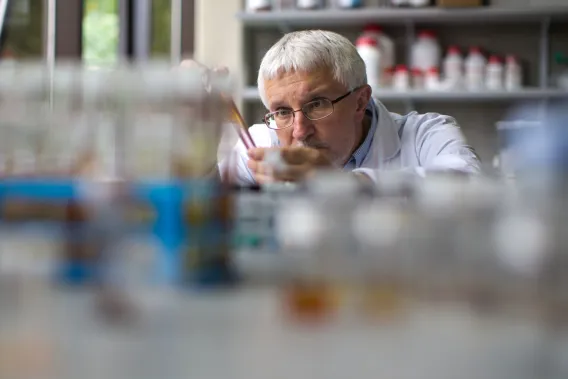
Eureka Moments
There’s no question that there is such a thing as a eureka moment. I would liken it to winning the lottery, because it's unexpected. It's not something that you were planning to happen. It's something that happened unexpectedly, but you knew was important. So it brings you to a fork in the road. And as everybody knows, if you come to a fork, you have to take one direction, so it's not as straight ahead as usual. When it happens, you know it, but before it happens, there's no expectation or predictability.
I think that I’ve had those eureka moments twice. The first one was by reading an article, when I was an assistant professor, that addressed the issue of crystals and the fact that crystals can't be designed. In other words, crystals just happen and we don't control them. And that inspired me.
It inspired me to question why that's the way it is. That's the way science is. This was in 1988 and I immediately changed everything I was doing and focused upon solving this problem. That's where the term crystal engineering comes from, the design of new crystals.
The second one was much later in my career -in 2012. So, it took around 24 years to go from when I started working in crystal engineering to when we had a result, which was very special.
It came from an undergraduate student who presented a progress report, a three-slide progress report on a Saturday morning. And the undergraduate student had discovered the best material for carbon capture at that point in time. My immediate comment was that's a Nature paper. And it ended up becoming a Nature paper. It's also the reason that led to me obtaining the funding to come to University of Limerick as a Research Ireland research professor.
In at the start of the Bernal Institute
I was awarded an SFI [now Research Ireland] research professorship which is an unrestricted grant of €5 million and at the time UL was developing the Bernal Institute.
It was creating the pieces to make together collectively a substantial critical mass of researchers in material science. One of the things that most interested me was that was no Bernal Chair of Chemistry, no Bernal Chair of Physics, no Bernal Chair of Biology. They were interdisciplinary.
All of the Bernal Chairs had an interdisciplinary research theme. And I became the first Bernal Chair of Crystal Engineering in the world. Things were different, and highly interdisciplinary.
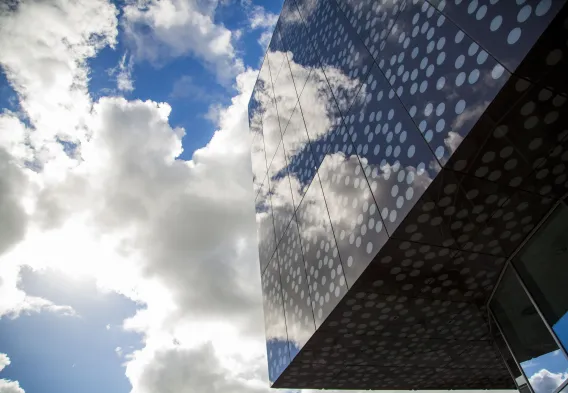
Why sustainability drives his research
Sustainability is key because anything that is unsustainable cannot be here when it runs out. So for example our reliance upon hydrocarbons for energy cannot be sustainable. Therefore, it is unsustainable. The only question is how long it will take for us to solve the problems of alternative energies, and that the ‘how we will do it’ is a much more complicated answer. But it's absolutely certain that we have to move to sustainability.
The goal of what we do is to create a secret source, which is the magic ingredient that makes key technologies much more energy efficient. If it was simply to make things better, it would be easier and incremental, but that won't work.
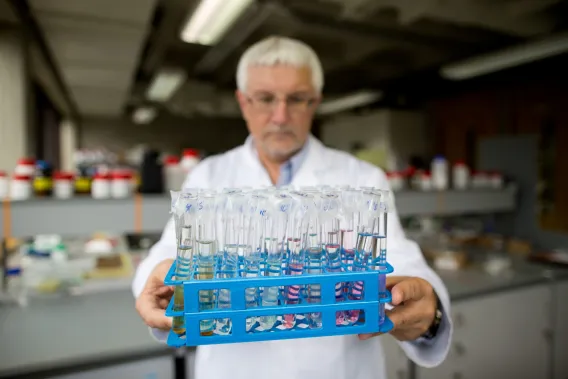
Capturing carbon is a driving force
For things like carbon capture one of the hardest topics right now is direct air capture, which is removal of CO2 straight from the air. It's possible there are technologies that can do it, but they're based upon a hundred-year-old chemistry. You can improve them, you can make them a little bit more efficient, but the problem is they're not viable for large scale operations and for using CO2 as a product. CO2 is not a pollutant as such, because it's necessary for life also. Just picking on carbon capture, our goal is to develop materials which are like sponges for carbon that spontaneously capture it from air in this room with no energy input to capture. Then the issue is releasing and what you do with the carbon after it's been captured.
So, at the moment, the reason the current technologies don't work very well is you can check out, but you can never leave because the CO2 is too strongly bonded to the sponge. Our goal is to make a sponge, which has a much lower energy to release the CO2. And we've made a lot of progress in that area.
It's not just simply carbon capture, it's what you do with it. So you might remember, some people might remember that there was a carbon dioxide shortage recently, and we might have had no beer for the summer, and that caused hysteria, right? If you can capture carbon from the air, you can simply use it where you, where you need it. Maybe beer is a bad example, but it's something people would understand. But also it's possible to grow food anywhere, anytime, anyplace on the earth. If you can capture carbon and if you can capture water with very little energy footprint. And so the carbon part I've just talked about, there's also a water component.
Water might be even more urgent than carbon
The carbon capture situation is that the world is slowly getting warmer and maybe over a generation, you're seeing some change. With water, around one third of the planet's population is already in a water deprived situation. And it's getting worse, much faster. The projections are that by 2050 two-thirds of people on the planet will not have will access to clean water. The other part of what we do is, is water harvesting. Uh, it's called h or atmospheric water harvesting. There is a very well-known technology for doing it that's called dehumidification.
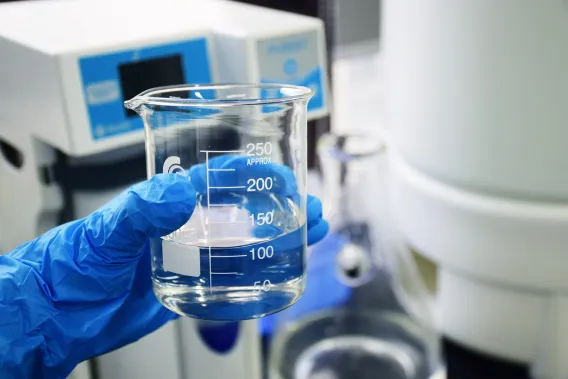
It's already done on a large scale industrially, but at a very high energy cost. A lot of people are unaware that the biggest cost of air conditioning is not cooling our heating, it's humidity removal from air in large buildings. There are large scale technologies for dehumidification, but their energy intensive. If we could even cut in half the energy footprint of dehumidification it would significantly cut on the energy costs of operating large buildings.
But we're after much more than that. We're after capturing water where there is none, under dry conditions. The current technologies don't work well in the middle of the desert, which is where you really need water or in a, in a place where there's no rain. And there are quite a lot of places on the planet that have little to no rain. So our goal there is to develop new technologies to capture water from air in the same way that you capture carbon. You have a sponge; it sucks up the water from the air. And then the question is how much energy you need to get the water back? It's all about the energy. Everything's about energy. How much heat or vacuum or pressure do you need to recycle your material? And so in the case of water, there are many materials that can capture the water.
They're called desiccant, but they are energy intensive. You have to heat them to 150 or 200 degrees Celsius to remove the water. Our goal is to go all the way down to 50 degrees. So, if you can imagine the amount of energy you need to heat something to 50 degrees is far, far less.
Two is greater than one…
The dream is to combine the two, combining carbon capture and water harvesting. When you can do that, you have everything you need to grow. So the goal, the dream, is not as far away as you might think, because it's already been in the movies, if you watched The Martian, they captured the CO2, and the water from the atmosphere and used it to grow plants. So the dream is food from air, or food fuelled from air by capturing CO2 and water. And the pieces of that jigsaw puzzle are coming together now. They're hard areas of research.
There are other people around the world working in this area, and there are companies starting to develop larger scale technologies that can accomplish this. You still need energy, but you need much less energy, so it becomes commercially viable.
What does the future hold
If I had to predict what it would mean, it would be everything would be local. Instead of having national or even citywide facilities for energy and water, you would have the capability to do these things in your house. Rr at least down the street. So what I would see is that everything would become local food production. Water production would become local anywhere, anytime, and it would have a huge reduction in the amount of energy needed for a society to move forward. What it means is that your children and grandchildren have a bright future. Not one that is looking quite dark and foreboding at the moment.
Fortunately, convincing people that there is an impending crisis does not seem to be as much of a problem as it was a generation ago. Nevertheless, the solution is as much political as it is scientific. It's political and economic and scientific all rolled into one. So the people who really need to listen are the decision makers. The people at the top of large corporations and at the top of government working together with scientists can conduct this earth shot.
There are rumours that companies like Google and Apple are not telling us, but this is where they're seeing the need to go in the future. So optimistically these problems are going to be solved, not in, not even in a generation. I'm just a little bit worried that it's not going to go as smoothly and as quickly as possible because of the flip side of politics and economics. We all know that there are big problems, deniers, people who simply won't accept that we need to change. I don't think that's the general public. I don't think it's the young generation. I think people are willing to move forward and suddenly green technologies and a green future are politically acceptable. So politicians are coming on board. The economics is a different story. We've invested in non-renewable, non-sustainable sources of energy for a hundred years or so, that part is the bigger challenge.
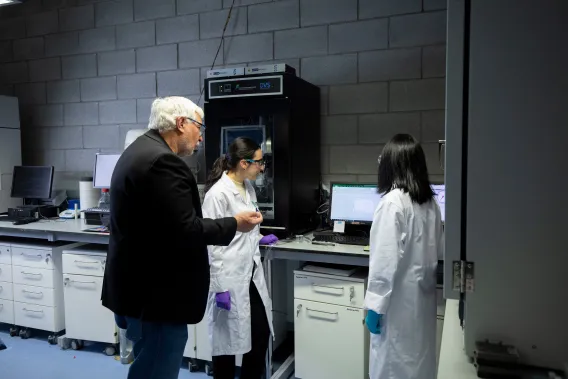
Impact is through disruption and mentoring
The most obvious answer in terms of how my work can impact the world is through the students that I train. Sometimes we forget. It's not just publications. It's not just molecules, it's people and throughout my career, I've trained, well over a hundred undergraduates and dozens of post docs and dozens of PhD students.
And the chances that they will really solve some of the world's problems is statistically higher than I will do it on my own. So that's perhaps the most tangible way in which things will change. Of course, I have ambitions even at a later stage of my career, to have a big impact on some of the immediate problems that we're facing, that relate to sustainability and in particular, energy sustainability. So there are some things that we are doing that potentially could have relatively immediate impact.
My ambition is to have a disruptive new technology that impacts the future in a positive way. There are several potential possibilities in that area. Water purification, carbon capture, cheaper and better pharmaceuticals are just three examples of where crystal engineering could be the key.
We call it creating the secret source that will lead to much better and more energy efficient technologies for everyday needs of society. Collectively people in science are driven by a dream. The dream is in almost all cases, to have a positive impact on society. Now it has to be much more than just a vague dream. It has to be a tangible dream because there is no question that there are global challenges that we're all aware of that must be solved.
So several people have heard the term earth shot. We don't need a moon shot anymore. We need an earth shot. We need to solve serious problems related to the environment and energy sustainability because there are actually existential threats to the future. So that sort of inspires people, inspires students. It inspires researchers.
But if only it were as easy as it sounds, it can't be done by one individual and it can't be done overnight. These are global challenges, and they need global solutions. We can play a small part in that. That's the dream, the ambition.
Teams and culture
I always end my lectures by saying how proud I am about how diverse my team is. And I mean that both in terms of gender and in terms of culture. We ran about 50-50 male-female.
And since I've moved to University of Limerick, 17 flags have flown over my group in terms of the countries that my team members represent.
My job is more like the coach than to be the midfield general or the striker. It's to make the team work together and keep it on track, which I have to say is probably the greatest job ever invented. Unlike real coaches you don't get fired from coaching a research team. It's something that you just simply, presumably, hopefully get more and more efficient and effective at as you get more experience.
It's part motivation, it's part organisation, it's part coordination.
Pulling on the green
I think there is something a bit special about Ireland in terms of, to use the expression that everybody's familiar with: “We're all wearing the green”. It means that we can all work together towards a common problem. So even though individualism is strong in Ireland, so is a community spirit and a team spirit. And that's much harder to find than you would believe. Most of the people I know work in a very highly individualistic situation, not in a team community-oriented situation, so I think Ireland can teach the world a lot about working together as a society, as well as working together in a team, as researchers.
And some last words of advice
My advice to prospective students and researchers is make sure that you enjoy what you are doing, that you're genuinely motivated to want to get up in the morning and get to work early because you can't wait to do your experiments as you genuinely love conducting research. Needless to say, it becomes self-fulfilling. It attracts people who are motivated by this kind of lifestyle. The other interesting thing is that after I meet somebody, I know within a day or two whether they're going to make it, because there's something about the skillsets and the motivation and the mentality of a researcher. It's driven by curiosity and more and more by curiosity about solving real world problems. If you're motivated to find a good job, then it's not the right place. You do get a good job out of it. But you won't be successful if you're not motivated to get up in the morning and get to work.
Curious about Michael Zaworotko's research
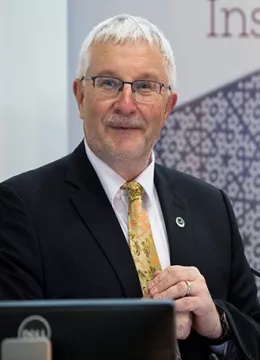
Read about the other researchers helping to change our society
Stay Curious for UL Research
